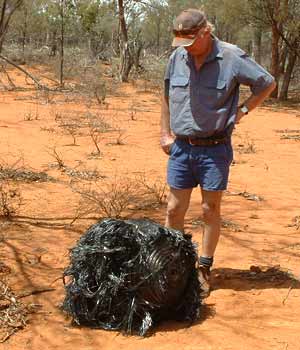It is also important to emphasize the precise location of the telescope, on the crest of the mountain, like the VTT, GCT, VNT and Themis telescopes, which undoubtedly contributes to its excellent seeing, due to the normal wind circulation in this site, that flows straight up through the Valle de la Orotava. The usual seeing values in the basic Ritchey-Chretien configuration are below 1" , with a record, up to now, of 0.65 arcseconds . The complex climatization system of the intelligent building which hosts the OGS also helps to improve the image quality, avoiding turbulence inside the dome by keeping it at the outdoor temperature.
The OGS telescope may work in three different configurations, each one with its own secondary mirror: the basic Ritchey-Chretien system, the modified Ritchey-Chretien system with focal reducer and the Coudé system.
The modified Ritchey-Chretien configuration (equipped with a focal reducer and a spherical secondary mirror) will be used to detect space debris . With a focal ratio of 4.5, this configuration provides a large field of view, essential to make maps and especially to look for orbital debris. In this configuration, a mosaic of four EEV 42-40 CCDs will be used, cooled with liquid nitrogen, each CCD having 2048x2048 pixels, which will cover globally a field of 0.5 degrees squared (0.7x 0.7 degrees).
The basic Ritchey-Chretien configuration, with a focal ratio of 13, will be used for some scientific astronomical observations. However, most of the astronomical projects are going to use the modified Ritchey-Chretien configuration, taking advantage of its large field of view.
The Coudé configuration, with a focal ratio of 38.33, will be used for the communications tests with the Artemis satellite, utilising an infrared laser.
The OGS has also two finder telescopes: one with a diameter of 20 cm , a focal relation of 15 and a field of view diameter of 21 arcminutes. The second finder telescope has a diameter of 11 cm , a focal relation of 6.8 and a field of view diameter of 1.4 degrees.
Text from IAC
Some images of the OGS telescope:
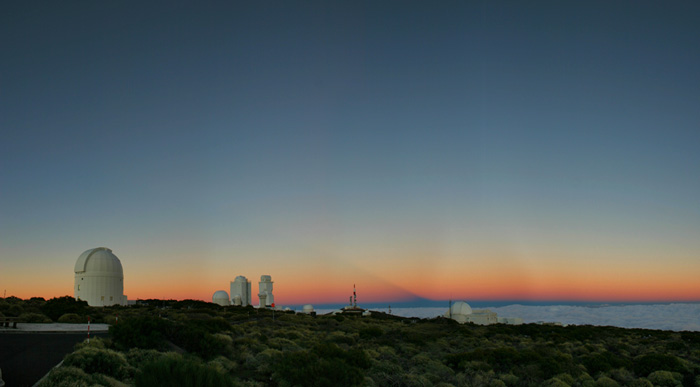
The telescope is a Ritchey-Chretien / Coudé with 1 meter diameter and English mount located in a dome 12.5 m:
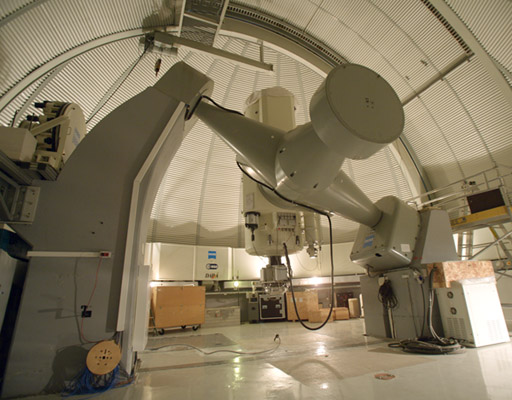
Details of the vacuum chamber and instrumentation to focus the telescope. It consists of a mosaic of 4 CCDs EEV 42-40, cooled by liquid nitrogen, each with 2048x2048 pixels, covering a total area of 0.5 square degrees (0.7 degrees 0.7x).
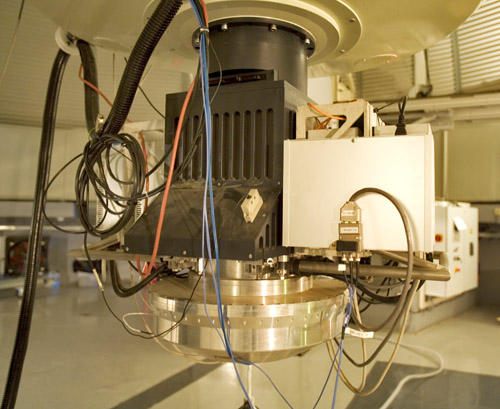
The procedure for filling the tank of nitrogen is done by connecting a hose to the bottom:
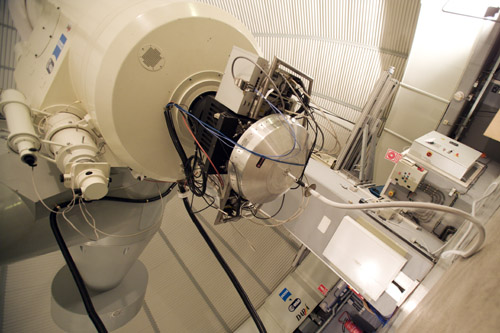
To see more information from the OGS telescope, instrumentation and caractericticas you can visit the Web IAC:
http://www.iac.es/telescopes/ogs/OGS.html
Images of the remains of space debris falling on the Earth:
At this web by ESA may be an animation that illustrates the growth and distrubution of the space debris since 1957 (launch of Sputnik, the first artificial satellite) until 2000:
http://www.esa.int/esaCP/SEMHDJXJD1E_FeatureWeek_0.html
When the remains of space junk falling to Earth are large enough so that gravity does not destroy, you may find that these fall to the ground. In the photo you can see remains of a Russian rocket in the Siberian republic of Altai.
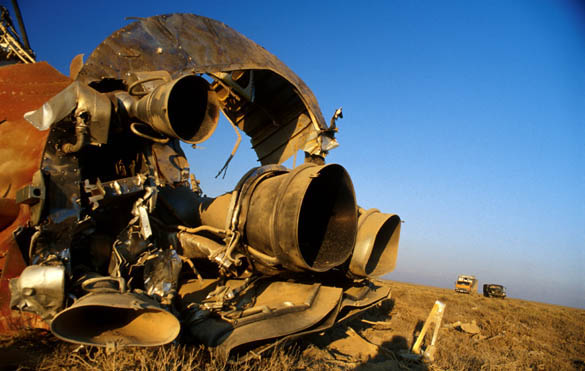

Laboratory tests of the impact area between a small aluminum, 1.2 cm in diameter and 1.7 grams moving to 6.8 km per second against an aluminum block, 18 cm thick. At the point of impact can be given conditions of temperature and pressure of more than 5,700 degrees . GPa . Space debris: assessing the risk . ESA / Agencia Espacial Europea.

Front view of the impact on solar cells of the Hubble Space Telescope (HST). Hole: 2.5 mm. The solar panels of the HST were recovered in March 2002, after 8.25 years in space. European Space Agency, ESA.
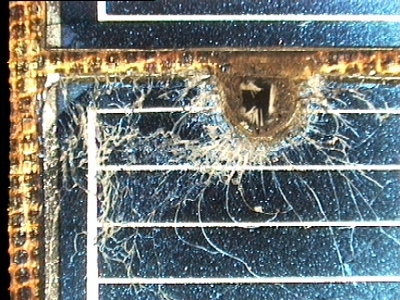
A piece of titanium 70 kg of engine Delta2 that crashed in Saudi Arabia in 2001:
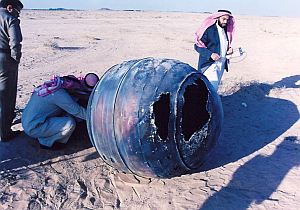
A piece of R2D2 shut somewhere in the state of Texas:
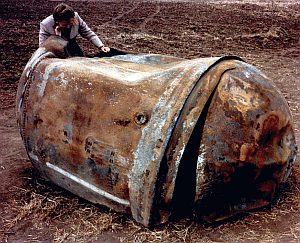
Part of a rocket launched from Cape Canaveral, in Forida, in 1998. It landed on a farm in Australia:
